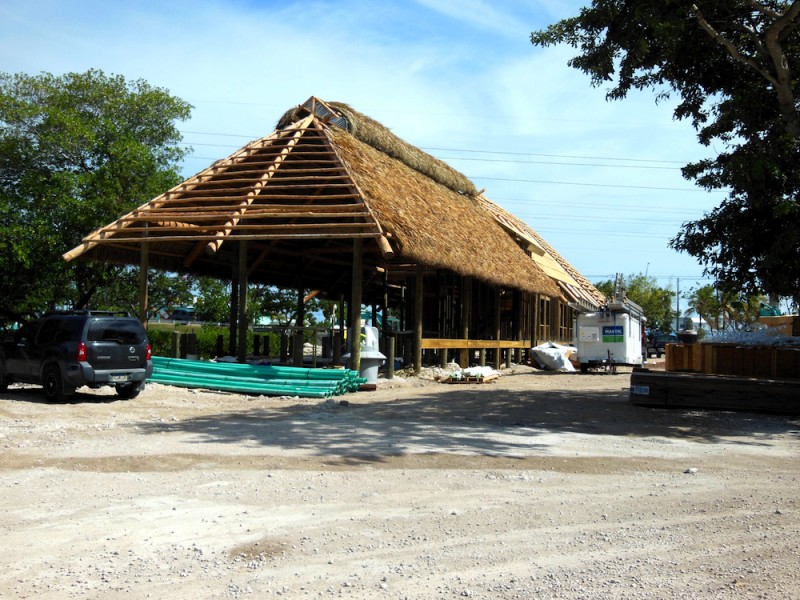Marathon Burns With Ecotourism Fever
Marathon is aglow. A new aquarium is under construction in town and the chamber, members of the city council, and the media have declared this Middle Keys city to be an ecotourism destination par excellence.
They cite the Dolphin Research Center on Grassy Key, the Turtle Hospital, Crane Point Nature Center, Pigeon Key and an as yet undeveloped Boot Key as evidence that tourists looking for places that care about their ecology will land smack dab in Marathon.
There’s just one problem. None of these qualify as ecotourism.
According to Wikipedia, several university programs use the following description as the working definition of ecotourism.
Ecotourism is a form of tourism involving visiting fragile, pristine, and relatively undisturbed natural areas, intended as a low-impact and often small scale alternative to standard commercial (mass) tourism. Its purpose may be to educate the traveler, to provide funds for ecological conservation, to directly benefit the economic development and political empowerment of local communities, or to foster respect for different cultures and for human rights.
While both the Dolphin Research Center and the Turtle Hospital do undertake a fine job of education, neither consists of fragile, pristine or undisturbed areas. The DRC has a sprawling campus of a number of buildings and puts its confined animals on display for the public, while providing information about them. They also allow the animals to breed in captivity so their mission of animal rescue is somewhat compromised.
The Turtle Hospital also does a terrific job of rescuing endangered and injured animals and, unlike the DRC, returns the animals to their native habitat. They also provide educational tours but all this is accomplished in a former motel.
Wikipedia goes on to say that ecotourism has been considered a critical endeavor by environmentalists, so that future generations may experience destinations relatively untouched by human intervention. Generally, ecotourism deals with living parts of the natural environments.
So, if Crane Point proceeds with its plans for a zip-line installation, the “relatively untouched” descriptor goes right out the window. Marathon also has its eyes on Boot Key, an area that had been trashed by people illegally dumping but is now isolated because the bridge leading to the site has been removed. The city hopes to buy the Key, now home to nesting birds, and put in walking trails, park benches, and who know what else.
The newest piece of Marathon’s alleged ecotourism effort will be a large aquarium near the eastern end of the island. Scheduled to open next summer, the aquarium will consist of a 175,000-gallon concrete tank complete with four acrylic windows so visitors can see inside. The main tank is slated to stand around nine feet tall with 6-foot-by-8-foot windows.
The plan is for people to be able to “touch and feel” the marine life and even be able to snorkel and Snuba in the main tank. Several smaller tanks are also planned.
Ecotourism? Ninety-eight percent of all saltwater aquarium animals are wild caught. According to a piece published by the Sea Shepherd organization, every year, millions of reef animals are collected on Hawaii’s coral reefs and shipped to the mainland United States, Europe and Asia for use in the aquarium hobby. They report that mortality rates in these tanks are astronomical. As an example, between capture and retail, up to 40 percent of Hawaii’s Yellow Tangs will die before reaching the hobbyist.
Though Yellow Tangs are extremely long lived in the wild, with an average age of 11 years on a protected reef, by some estimates, just a few percent of coral reef wildlife will survive over a year in captivity.
The new Marathon aquarium will most likely contain fish that have been imported as well as those taken are from local waters. Not exactly natural habitat.
Florida Fish and Wildlife allows the taking of wild fish for the aquarium trade by licensed operators (http://myfwc.com/fishing/saltwater/commercial/marine-life/) and has developed rules for doing so. However, aquarium owners and operators are taking fish from public waters and keeping them in captivity
Finally, Marathon only has two motels that are listed in the state’s Green Lodging directory. One is the Gulfview Waterfront Resort on Grassy Key, which only has 11 units. The other is The Hammocks at Marathon, a timeshare resort. If the city really wants to encourage ecotourism it and the chamber will need to strongly urge existing motels as well as the two or three new ones that are planned to become “green.” Otherwise, those who might be interested in travelling to an ecotourist location won’t have an acceptable to stay.
Ecotourism focuses on socially responsible travel, personal growth, and environmental sustainability and typically involves travel to destinations where flora, fauna, and cultural heritage are the primary attractions. Ecotourism is intended to offer tourists insight into the impact of human beings on the environment, and to foster a greater appreciation of our natural habitats.
With its spectacular natural habitat, Marathon could be an ecotourist destination. But it currently flunks the standards. Badly. Maybe the council and the chamber should invent a new word.
